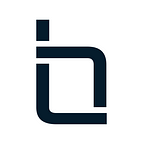Impact of Blockchain in Telemedicine Technology
Blockchain came with efficient solutions to multiple issues prevailing in telemedicine systems. Solutions to increasing counterfeit drugs, data breaches and other significant factors became the driving force for Blockchain healthcare market growth. Marketsandmarkets predicted that the global Blockchain healthcare market would reach 829 million USD by 2023.
Blockchain facilitates the telemedicine sector by providing secure data sharing, the privacy of PHIs and verifiable data. The incorporation of Blockchain in Telemedicine gave it the required boost and increased its market value. According to Statista, the telemedicine market was valued at 45 billion USD in 2019, which has grown significantly and is expected to reach more than 175 billion USD by 2026.
This article aims to deliver a clear explanation of how Blockchain aids telemedicine services in detail.
Blockchain combined with Telemedicine.
Blockchain: It is a distributed ledger technology that ensures data security, brings absolute transparency to the system and eliminates third-party interventions.
Telemedicine: It refers to the practice of providing care to patients remotely. It facilitates video conferencing, remote patient monitoring, auto payments, remote treatment and other healthcare facilities digitally.
When integrated with a telemedicine system, Blockchain provides a distributed architecture to manage the shared ledger of health records. Every data on the ledger is synced and verified with every other node on the network. Blockchain eliminates all the significant challenges prevailing in a telemedicine system. It facilitates tracing the pharmacy supply chain, verifying patients’ credentials, tracking infected patients’ locations, protecting health records, and handling other clinician activities. The ability of Blockchain to perform all these operations comes through its intrinsic features:
- Immutable: Immutability ensures the integrity of data. All the health records are made immutable by applying digital signatures and using cryptography standards on every transaction.
- Decentralized: Decentralization aims to bring distributed control in the system; no single central authority holds the power to control the data. It increases the overall robustness of the system.
- Auditable: Blockchain allows the concerned authorities to trace the drugs’ provenance and development throughout the supply chain.
- Anonymous: Blockchain keeps the identities of the participants anonymous during transactions to maintain the security of data.
- Open-source access: Data is openly accessible to all. Patients can access doctors’ profiles, doctors can access patients’ medical history records whenever required. Any authorized user can access data on the ledger easily.
How does Blockchain work in a Telemedicine system?
Digital health identity registration and authentication
A Blockchain-based decentralized application interacts with users through an intuitive user interface portal that facilitates viewing and sharing patient data to create a collaborative treatment plan. Participants’ digital identities are verified and authenticated through this portal. A Registry Smart Contract is included to maintain the participants’ digital identities who register with the application. Participants’ phone numbers and email addresses are saved in the Registry. This users’ data is secured using public encryption and signing keys generated at user registration time.
- User’s registration request: A user, i.e., a patient or a doctor, generates a request to register their digital identity on the portal by providing a verified email address.
- Request forwarded: The decentralized application’s portal receives the request and forwards it to the server.
- Generate encryption keys: The server verifies the request to ensure its legitimacy. Encryption and signing keys are created after successful verification of the request. These encryption and signing keys are then registered in Registry Smart Contract.
- User accesses keys: The server provides the option to the user for download keys.
- Registration response: The user receives the registration response.
- Login request: Now, the user requests to login to the portal using singing keys.
- Request forwarded: The login request is sent to the server for further verification.
- Identity verification: The server responds to the login request after verifying that the identity exists in the Registry Smart Contract.
- Verification response: Verification response is then sent to the server.
- Response forwarded and displayed: The server forwards this response to the portal and then finally shows it to the user.
Data access authorization
A token-based data exchange system is used to allow permission for data access. All the user interactions and requests are logged on data access Smart Contract. It helps in the analysis and tracking of what data is shared with whom and when. Every authorized user’s identity is mapped to custom-named access tokens, structured as a nested object associated with a boolean value based on access granted or revoked. When access is revoked, the authorization is set to false and the associated token value is set to empty.
The data access workflow includes the following:
- New prescription generated: The doctor shares a new prescription with the patient.
- Request forwarded: This request is sent to the server.
- Request for public key: The server asks for the patient’s public key to verify their existence.
- Requested key returned: The Registry contract confirms the patient’s existence and sends their public key to the server.
- Log generated token: The server now creates an access token for the patient and records it on the Access contract.
- Patient requests access: After logging in successfully, the patient requests to access the available data and uploads a private encryption key.
- Request forwarded: The request is sent to the server for further processing.
- Server requests for tokens: The server requests all the tokens accessible to the patient.
- Requested tokens provided: Access contract sends all the requested tokens to the server.
- Display links: The server performs decryption and verification of the digital signature to obtain access tokens. The server then creates hyperlinks for the patient to access the data and asks the portal to display these links to the patient.
Conclusion
Blockchain has become a crucial element for telemedicine platforms. It plays a vital role in data security, remote patient monitoring, automating micropayments and identifying frauds. Many health-tech experts have already admitted that a secured digital future isn’t possible without Blockchain.
